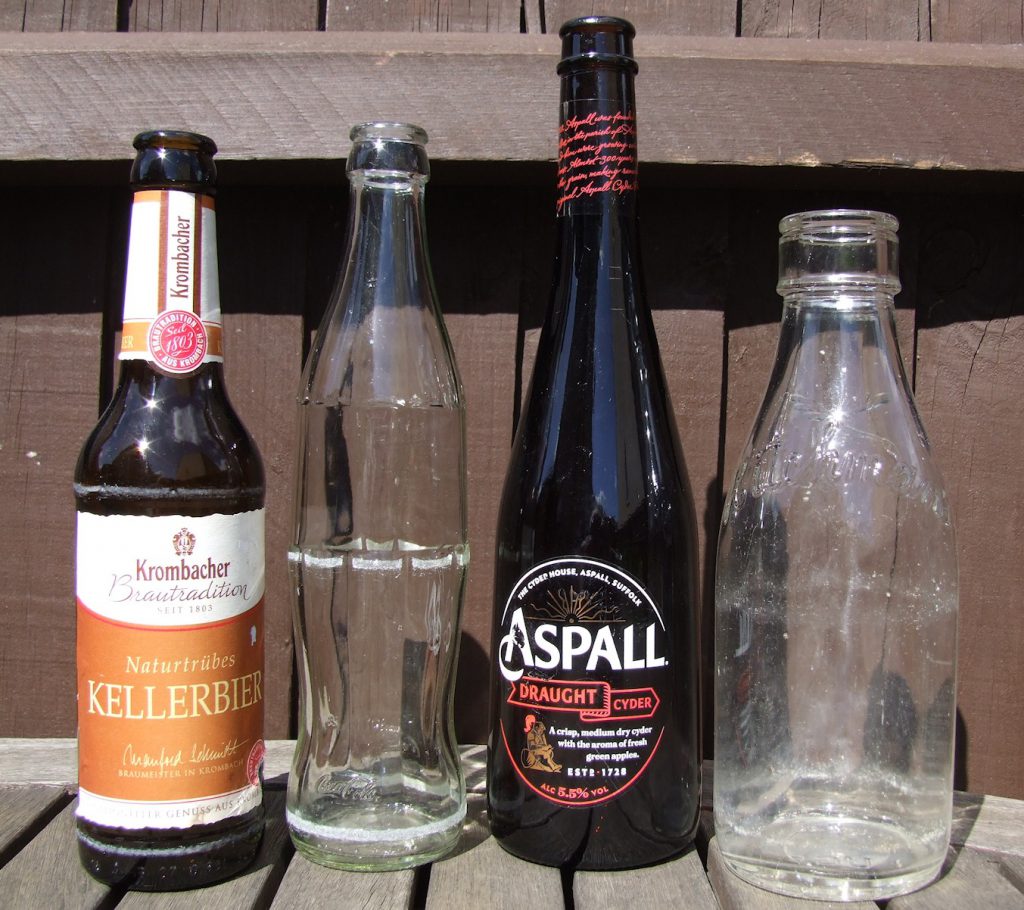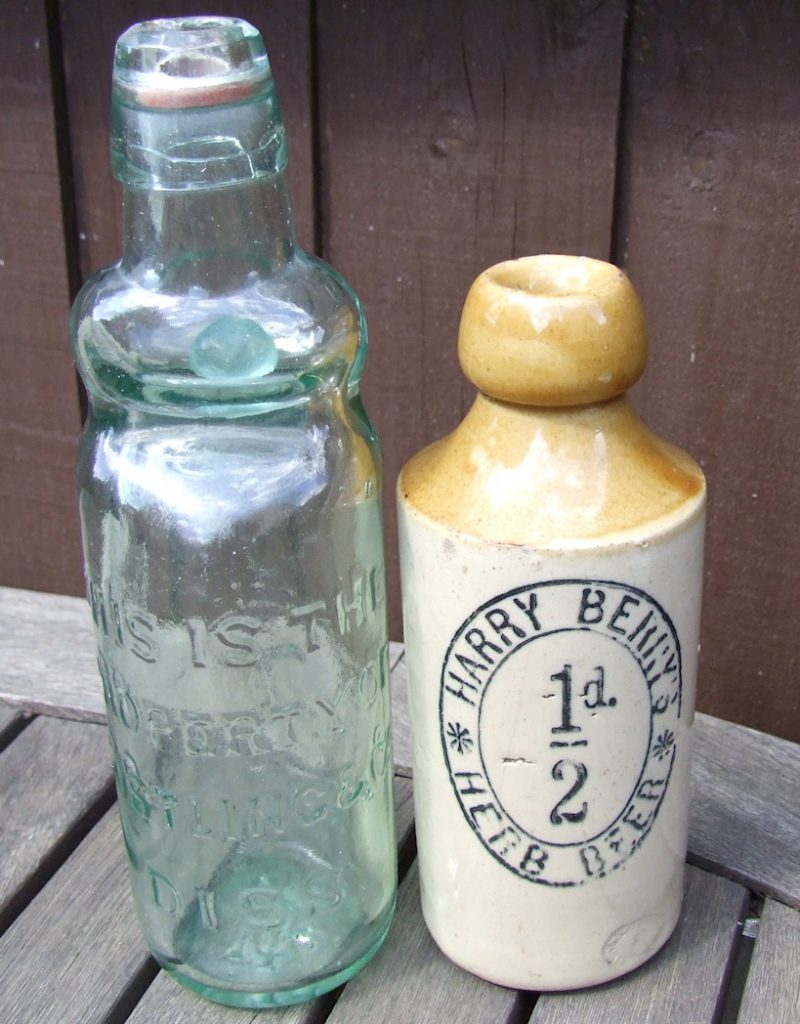When clearing some litter from a local lay-by I came across a bag of rubbish containing various bottles and jars from Germany. The beer and coke bottles are interesting in that the shoulder and base of each bottle have rings of wear, presumably from rubbing against each other when being spun around by automated sorting and cleaning machines. The bottle to the right of them is a British bottle for comparison, a cyder bottle of custom design, that I found on the same verge. On the far right is an older returnable milk bottle, probably from the 60’s or 70’s.


The German bottles have obviously been reused many times, but having been dumped in Britain have now reached the end of the road. With luck the glass might get remade into another bottle. The British cyder bottle, not content just to be single use, shows additional environmental love by having plastic labels. The coke bottle paper label was already damp and washed off easily.
At the turn of the twentieth century bottles were still being hand made by potters and glass blowers. These were purchased by the myriad of mineral water firms to be found in every large town and city across the country. The bottles below are from a different age when the companies producing the drinks wanted to retain as many bottles as possible.

The stone ginger beer bottle would have been hand thrown by a potter and usually printed with the owner’s name to prevent them being stolen by rival firms. The manufacture of Codd bottles was a complex process. The glass marble had to be dropped into the hot bottle before the lip was added and then a groove pressed inside the lip with a special expanding tool. When the bottle had cooled, a rubber sealing ring was inserted into the groove. With a carbonated drink the marble pressed tightly against the rubber gasket forming an air-tight seal. More importantly, it did away with corks. These were expensive to buy, were only used once, and had to be tied or wired on. This was not only a time consuming and labour intensive job but hammering the cork in could cause the bottle to shatter and injure the unlucky bottler.
Such bottles were expensive to produce and would have needed to be cleaned, refilled and resold before a profit could be made. Here, the need to reuse bottles was more of an economic necessity rather than any concern about the environment. Presumably restaurants and hotels could do a reasonable job of collecting and returning empties, but shops must have had a much more difficult time in persuading customers to bring them back.
The glass Codd bottle announces in large letters that it is the property of the mineral water company that produced it. In this case, a Chemist and Mineral Water producer in Diss, Norfolk. It is is embossed as follows:
THIS IS THE
PROPERTY OF
GOSTLING & CO
DISS
Hiram Codd, the inventor of the bottle, was also responsible for setting up a bottle exchange in London where discarded bottles were collected and returned to the manufacturers for a small fee.
Harry Berry’s Herb Beer bottle has a deposit return value of a halfpenny and it is printed on the front of the bottle in large numerals to encourage its return. He ran a fried fish shop in Lockwood, Huddersfield. On the rear are the full instructions:
If not drunk on the premises
1/2d extra will be charged
which is paid back when
the Bottle is returned.
Such bottles were very popular for a time, but ginger beer bottles fell foul of stricter hygiene regulations (you can’t see if they are clean inside), and Codd’s patent bottles were replaced by more standard shaped bottles sealed with a crown cork. Automated bottling machines led to the demise of the marble bottle and a more efficient and profitable soft drinks business.
How different is today’s model of consumption where bottling companies only look at the economic cost of a single use disposable container. The bottle deposit system faded away in the 1980’s with milk bottles being some of the few glass containers remaining on doorsteps to be collected, washed and reused. Over the last 50 years the soft drinks industry has switched from glass to plastic to reduce their costs. As well as contributing tooth decay and obesity to the human condition this has also resulted in billions of plastic bottles being deposited into our environment. Presumably while economists rather than environmentalists remain in charge little will change for the better. It will be interesting to see what the proposed Deposit Return Schemes within the UK actually achieve.
References
YouTube video showing the production of a Codd bottle and marbles circa 1925. It is a semi automatic process in blowing the bottle and the film must have been made when the Codd bottle was nearing the end of its commercial life. It is easy to see why such a process is much more expensive than using a fully automated bottle blowing machine to produce bottles with a crown cap closure.
How it’s made – Codd Bottle – The marble inside the bottle
https://www.youtube.com/watch?v=Pxz_pe77AFM
